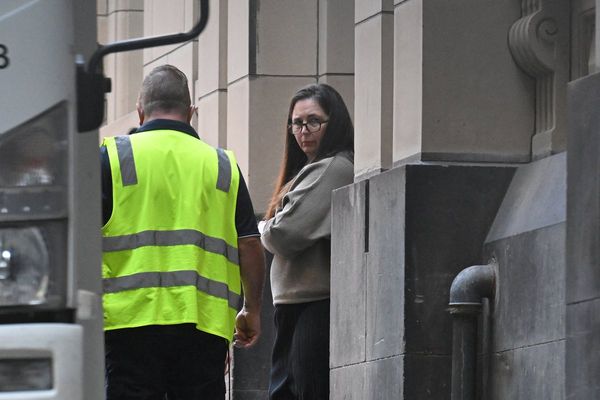
As Carlos Alcaraz pulled up at the Wimbledon champions’ dinner on Sunday, his mind could not have been further from thinking about everything he had achieved throughout that day. After demolishing Novak Djokovic in straight sets to defend his title and working through his obligatory post-match duties, from press to anti-doping, Alcaraz prepared for the evening with an eye on Berlin, watching between a TV and a tablet.
In the courtyard of the old War Office buildings in Whitehall, now a Raffles hotel, the Spaniard and his team remained in their car. The final minutes of the Euro 2024 final were ticking down and Mikel Oyarzabal had scored a potential game-winner; he refused to leave until he was certain that the goal would stand. When Alcaraz finally entered the building he was led by a photographer to take pictures before the dinner began. Throughout that period, a phone that was streaming the game live was passed to Alcaraz’s team and back to him whenever possible.
“Just before getting out of the car, I saw the goal so I thought it was offside,” Alcaraz said, laughing, during the dinner. “I couldn’t get out of the car until I made sure it was a goal. So it was a few minutes where the nerves were so high.”
The day ended exactly as Alcaraz hoped, combining with the national team to mark one of the most significant days in the history of Spanish sport. For Alcaraz, at least, there will surely be many of these days to come.
Over the past 19 years, Djokovic has won so many matches under unlikely circumstances; matches snatched from the brink of defeat, injuries dramatically overcome or bad form eradicated in the decisive moments. His aura is immense. With the Serb returning rapidly from meniscus knee surgery, this match was a litmus test for Alcaraz.
This was a chance for the world No 3 to show that the paradigm had truly shifted and that he now meets Djokovic as an equal, rather than a challenger as before. He made it clear that next time, if Djokovic wishes to beat him, he will have to show up on his best form, with top fitness levels and playing his best tennis. Nothing else will do.
The one-sidedness of Alcaraz’s triumph was brilliant enough, but when he gagged from triple championship point up at 5-4, 40-0, the manner with which he steadied the match and won the tie-break revealed even more about his character.
A year earlier, Alcaraz badly missed a drop shot on the opening point of his service game as he attempted to serve out for his first Wimbledon win against Djokovic. He responded by immediately attempting another drop shot, this one a winner, before blazing through the match. At 5-4 in the tie-break on Sunday, Alcaraz called back to that moment. Two service points away from the match, he was bold enough to slice the tension and set up championship point with another outrageous drop shot winner.
There is no doubt that this is the most complete 21-year-old tennis has seen. He is blessed with such a polished, vast arsenal of shots to choose from and complements those skills with his mental strength. With age and maturity, he continues to improve both mentally and technically while learning how to use his skill set effectively in the biggest moments.
One of the most noteworthy improvements has been Alcaraz’s serve, which was previously the one facet of his game that could let him down. Earlier this year, the Spaniard changed his service motion, smoothing out his swing to a simpler, more straightforward delivery.
After their match on Sunday, Djokovic recognised the strides Alcaraz has made with his serve, which allowed him to maintain the pressure on one of the greatest returners of all time.
It is, however, still difficult to say whether he is the greatest 21‑year‑old the sport has ever seen. Rafael Nadal was also a teenage phenomenon, reaching five grand slam finals while winning three, and he helped to transform the game with his ballistic heavy topspin forehand. But he was blocked from achieving even more by Roger Federer during the Swiss’s peak years.
Nadal will play an even greater role in Alcaraz’s career as the focus gradually shifts back to the clay courts of Roland Garros, where the Olympics will be held later this month. Alcaraz and Nadal will team up in the doubles.
Later in the Wimbledon dinner, as the night wound down, Alcaraz and Barbora Krejcikova were beckoned on to the podium where they shared a dance. While Alcaraz continues to build his achievements at a frightening pace, the Czech is also quietly one of the most successful tennis players of the generation, a first-ballot hall of fame player. She now owns two singles grand slams, seven women’s doubles majors – two of all bar the US Open – and three Australian Open mixed doubles crowns. Her total grand slam count is now 12.
In the early days of her career, she could not even break into the top 100 of the singles rankings. Now she is a multiple grand slam champion in all categories. Despite her inconsistency, the ball-striking talent at her grasp is immense and when she is flowing, her timing and ability to change the direction of the ball is rare. Now, like Alcaraz, those talents are immortalised in Wimbledon history.







